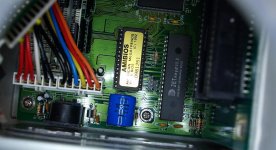FredC
Diamond
- Joined
- Oct 29, 2010
- Location
- Dewees Texas
I have a Omniturn motherboard that the Cmos battery just failed. The machine is about 24 years old. Replaced the battery in the other machine and it was a piece of cake. This one as the title mentions is soldered to the board with welded on leads to the actual battery. I found an old bad mother board that has a replaceable CMOS battery. I measured the distance between the leads on the permanent battery and got .806 inches on the battery holder the distance is .764. Both seem to have solder only on the underside of the board. What are the chances of success in replacing the battery with the battery holder? From previous discussions here I know boards have multiple layers, if the only connection is on the bottom of the board how difficult will this be? I sent the previously discussed boards out to be repaired so I never got a solder sucker. Can one be improvised with a vacuum pump and a plastic nozzle? Figured plastic might not draw the heat off the joint.
Anyone ever done this? Both are 3 volts. The Omni mother board is rather special to fit the riser and expansion cards.
Bad cap thread: https://www.practicalmachinist.com/...king-electrolytics-380850/?highlight=bad+caps

Anyone ever done this? Both are 3 volts. The Omni mother board is rather special to fit the riser and expansion cards.
Bad cap thread: https://www.practicalmachinist.com/...king-electrolytics-380850/?highlight=bad+caps


